Anche quest’anno, con mio grande piacere, mi è stata offerta la direzione editoriale di CapriLife.
Subito mi sono chiesta a quali artisti dedicare questo numero, quale tematica privilegiare.
Sono ormai cinquant’anni che frequento Capri e ho deciso così di voler restituire, attraverso le opere degli artisti, quelle emozioni che quest’isola, con i suoi colori, la sua natura prorompente, le sue fascinose seduzioni e, allo stesso tempo, il suo carattere profondamente spirituale, è capace di trasmettere.
La scelta è ricaduta su quegli autori che utilizzano strumenti come il colore, i materiali e la luce per costruire uno spazio emozionale e poetico nel quale potersi raccogliere, fornendoci l’occasione di entrare in intimità con noi stessi. Si crea così una relazione diretta con la vera essenza delle cose, che diventa l’opportunità per poter entrare in una dimensione che va oltre quella dello spazio e del tempo.
Questi strumenti, propri del fare arte, sono dotati di specifiche caratteristiche emozionali e pertanto influenzano la nostra psiche. Il modo in cui li percepiamo e a cosa li associamo dipende dalle esperienze della nostra vita e dall’ambiente sociale e culturale in cui viviamo. La nostra reazione rispetto a un rosso magenta o a un blu cobalto, rispetto a una tela ripiegata su sé stessa o a una lastra di marmo, può anche variare con il nostro umore e naturalmente può cambiare da persona a persona.
Come ben spiegato nella Treccani “la percezione è in parte un processo basato su regole cerebrali innate o acquisite che guidano la nostra visione. E quando le entrate dal mondo esterno si armonizzano con le proprietà cerebrali, allora il circuito entra in risonanza, rispondendo ottimamente in termini di impulsi nervosi, di mediatori chimici e di sostanze ormonali, e anche le connessioni con i centri emotivi si attivano facendo nascere così l’esperienza che si ha dinanzi all’opera d’arte”.
In questo modo la reazione emotiva generata dalla fruizione dell’opera influenza il nostro sentire, condizionando anche altri aspetti della coscienza come le emozioni, il pensiero o la dimensione spirituale dell’essere, ponendoci in un confronto ravvicinato con noi stessi. I colori, i materiali, la luce, calati in questa dimensione metafisica, diventano così il tramite più diretto con il mondo dei sentimenti, delle idee, dell’immaginazione, del senso della vita.
David Hume scriveva nel saggio Of the Standard of Taste (1757) che “la bellezza delle cose esiste nella mente di colui che le contempla”. Una definizione che ben si presta a descrivere l’esperienza dell’arte, dimensione in cui si concretizza il miracoloso convergere della razionalità con la fantasia, dell’etica con l’estetica, del materiale con lo spirituale.
Gli artisti che qui presentiamo sono coloro che per scelte stilistiche meglio esprimono, per me, quest’idea di arte come generatrice di spazi emozionali e poetici, ciascuno in modo diverso, come emerge dai brevi estratti degli articoli proposti in questo numero e di seguito riportati.
Ettore Spalletti Gli azzurri, i rosa, i grigi, “ospitano” l’osservatore che vi si immerge, in una temporalità circolare che non rimanda al reale ma racchiude in sé passato, presente e futuro. È questo l’austero e monumentale mondo di Ettore Spalletti, il più spirituale dei grandi artisti italiani, la cui poetica è fortemente intrisa di un rigore concettuale quasi ascetico.
Lawrence Carroll Amava i materiali, specie quelli umili, che considerava pregni di significato. Una tela ripiegata su se stessa e accantonata in un angolo della stanza o una fotocopia macchiata accidentalmente di pittura, suggerivano a Carroll qualcosa di compiuto, come se gli strumenti del fare fossero già intrisi di una poesia che non poteva essere ignorata.
Mimma Russo Ogni sua opera è uno spazio mentale, un nuovo passo verso un orizzonte fluido e impenetrabile. E il nero è una traccia di memorie, un’impronta leggera di presenze e preesistenze che conducono chi guarda lungo una linea d’ombra in cui si fondono pensiero e sospensione, in cui tutto si azzera e si confonde.
Alfredo Maiorino Nei suoi lavori l’immagine sembra apparire o dissolversi irrimediabilmente. Ciò da movimento mentale, ma allo stesso tempo tutto è fermo. Questo continuo tentativo di messa a fuoco, questo movimento percettivo e mentale silenzioso, crea una continua sospensione, un’attesa.
Anish Kapoor Attraverso il colore che sborda e deforma gli oggetti della serie 1000 names, Kapoor compie qui, per la prima volta, il gesto che connoterà la sua intera parabola artistica: manipolare la percezione di chi osserva.
Wolfgang Laib Per Laib ogni materiale, ogni forma, ogni disposizione richiama qualcos’altro, all’interno del trionfo della natura, o nella domanda dell’esistenza, fino al mistero dello spirito e alla sfera della devozione. Allora quello di Laib è un lavoro che ha a che fare con un processo antico e universale, che collega il privato al cosmo, mescola l’intimo con un disegno superiore su cui invita a riflettere o con cui chiede di relazionarsi.
James Turrell I Ganzfeld di Turrell sono sale invase da luci colorate rarefatte, all’interno delle quali si perde la cognizione del tempo e dello spazio. L’unico elemento codificabile resta la luce che manifesta la sua consistenza fisica grazie alla compressione nello spazio chiuso. L’artista spinge ad interrogarsi non su quello che viene visto ma sul modo di percepire la densità della luce.
Rinko Kawauchi Scopriamo, in ogni suo racconto fotografico, il suo viaggio nel quotidiano, raccontato in una dimensione di sogno, nella quale la luce è quasi sempre diffusa e i suoi scatti sembrano emanare un profumo di attesa in cui potersi liberamente abbandonare.
Tokujin Yoshioka L’imprevedibilità formale di Tokujin Yoshioka crea nei suoi lavori un’aura magica scollegata dall’iter progettuale. Le opere e i prodotti incantano e seducono ponendo al centro il fruitore. «I messaggi non sono espressi dalla materialità degli oggetti che produco ma dalle sensazioni che sanno esprimere. Chi si approccia ai miei prodotti e alle mie opere deve provare meraviglia».
Livio De Simone “Sono un pittore, non un sarto”, diceva, e così portava con coerenza il proprio “genio pittorico” sul tessuto, eludendo i vincoli della complessità del taglio sartoriale. Usava spazzole, spugne e pennelli per creare tessuti indossabili sui quali veniva resa, con “tutti i colori possibili”, la tradizione iconica mediterranea.
Michelangelo Bastiani L’artista riproduce una dimensione in cui reale e virtuale convivono, fino a crearne una terza. Un microcosmo perennemente in movimento e in comunicazione con l’osservatore. Il pubblico diviene così protagonista di un gioco di illusione ottica in cui percepisce l’immagine video come realistica, tangibile, volumetrica.
Umberto Ciceri L’artista ritrae “personaggi ritmici”, opere che invitano a muoversi per poterle vedere, stabilendo così con l’osservatore una sorta di legame animato. Il movimento dell’osservatore fa muovere l’immagine e il movimento dell’immagine fa sì che l’osservatore si muova. Ne risulta un processo immersivo nelle profondità della percezione.
This year, to my great pleasure, I was tasked once again with the editorial direction of CapriLife I immediately pondered on which authors to feature in this issue and which subject to choose. By now I have known Capri for fifty years, and so I decided to give back, through the works of the artist, the emotions that this island, with its colors, its overflowing nature, its fascinating seductions and, at the same time, its deeply spiritual disposition, is capable to convey. The choice has fallen on those authors who employ instruments such as color, materials and light to create an emotional and poetic space in which we can concentrate, giving us the chance to be intimate with ourselves. Thus, a direct relation with the true essence of things is created, which becomes the opportunity to enter in a dimension beyond space and time. These instruments, signatures of the making of art, are provided with specific emotional characteristics and hence they influence our psyche. The way we perceive them and what we relate them to depend on our life experiences and on the social and cultural environment. Our reaction towards a magenta red or a cobalt blue, compared to a canvas folded in on itself or a marble slab, can change following our mood and, naturally, it can change from one person to another. As perfectly explained by the Treccani “perception is in part a process based on innate or acquired cerebral rules guiding our vision. And when elements of the outside world harmonize with the cerebral properties, then the circuit resonates, optimally responding in terms of nerve impulses, chemical mediators and hormonal substances, and even the connections with the emotional centers are activated, giving birth to the experience one lives in front of the work of art”. This way, the emotional reaction caused by the fruition of the work of art influences our feelings, conditioning other aspects of conscience as well, such as emotions, thoughts and the spiritual dimension of being, putting us in a close confrontation with ourselves. Colors, materials, light, lowered in this metaphysical dimension, become, in this way, the most direct channel with the world of feelings, ideas, imagination and the meaning of life. David Hume wrote in his essay Of the Standards of Taste (1757) that “the beauty of things exists in the mind of those who admire them”. A definition well suited to describe the experience of art, a dimension where the miraculous convergence of rationality with phantasy, ethics with aesthetics, material with spiritual, materializes.
The artists we introduce here and those who, for stylistic choices, better convey for me, this idea of art as a generator of emotional and poetic spaces, each different from the other, as we can see from the brief excerpts below, taken from the articles featured in this issue.
Ettore Spalletti Shades of light blue, pink, gray “host” the observers who lose themselves into them, in a circular temporality that does not reference reality but encloses past, present and future. This is the austere and monumental world of Ettore Spalletti, the most spiritual among the great Italian artists, whose poetic is strongly imbued with a conceptual, almost ascetic, severity.
Lawrence Carroll He loved materials, especially the humble ones, which he considered impregnated with meaning. A canvas folded in on itself and abandoned in a corner of the room or a photocopy accidentally stained with paint, suggested Carroll something finished, as if the tools were already heavy with a poetry that could not be ignored
Mimma Russo Every piece is a mental space, a new step towards a fluid and impenetrable horizon. And the black is a trace of memories, a light footprint of presence and pre-existence leading the observer along a shadow line where thought and suspension merge, where everything returns to zero and blends.
Alfredo Maiorino In his works the image seems to emerge or dissolve, hopelessly. This create a mental movement, yet at the same time everything is still. This continuous attempted focus, this silent perceptual and mental movement, creates an incessant suspension, an anticipation.
Anish Kapoor Through the color, which overflows and deforms objects, Kapoor performs here, for the first time, the act that will characterize his entire artistic parabola: he manipulates the perception of the audience.
Wolfgang Laib For Laib, every material, every shape, every disposition reference something eels, inside the triumph of nature, or in the question of existence, reaching the mystery of spirit and the dimension of devotion. Then, Laib’s work has much to do with an ancient and universal process, linking the private with the cosmos, mixing the intimate with a master plan we are invited to ponder on and relate with.
James Turrell Turrell’s Ganzfeld are halls invaded by rarefied colored lights where the only perceivable shape is a light rectangle often made of the same color invading the room, within which the sense of time and space is lost. Light remains the only codifiable element, manifesting its physical consistency thanks to the compression inside the closed space. The artist leads us to ponder not on what is seen but on how to perceive the density of the light.
Rinko Kawauchi We discover in all her photo stories, her journey into the daily life, depicted in a dream dimension, where light is almost always scattered and her takes almost seem to release a scent of expectation, where we can freely love ourselves.
Tokujn Yoshioka The formal unpredictability creates in his works a magical aura disconnected from the design process. Works and products enchant and seduce, placing the bystander at the center. “Messages are not transmitted by the materiality of the objects I produce, but thanks to the feelings they can convey. Whoever approaches my products and my works must feel a sense of wonder”.
Livio De Simone “I am a painter, not a tailor”, he said, and so, ignoring the logics of fashion design and industrial productions, he coherently brings his “pictorial genius” on the fabric, on the irregularities of the traits, avoiding the restrictions of the tailor cuts. He used brushes, sponges and brushes to create wearable fabrics where he conveyed with “all the possible colors” the iconic Mediterranean tradition.
Michelangelo Bastiani The artist reproduces a dimension where real and virtual coexist, to the point of creating a third dimension. A microcosm perpetually in motion and in communication with the audience. who becomes the protagonist of an optical illusion game where it perceives the video image as realistic, palpable, volumetric.
Umberto Ciceri The artist portrays “rhythmic characters”, works that encourage to move in order to observe them, establishing this way a sort of animated relationship with the observer. The movement of the audience moves the image and the movement of the image makes sure that the audience moves. The result is an immersive process in the depths of perception.


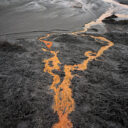
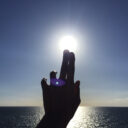

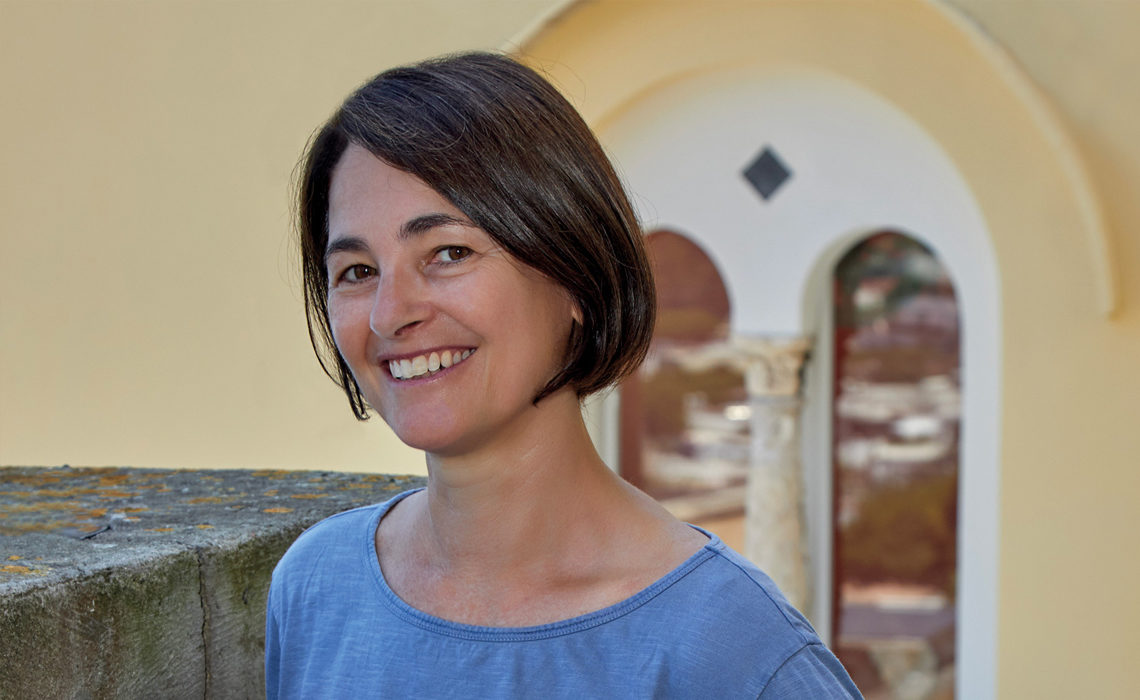
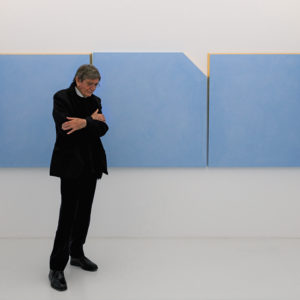
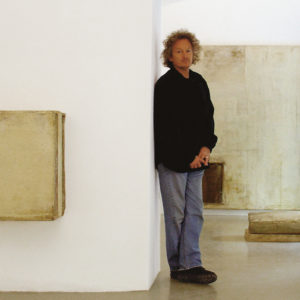
No Comments